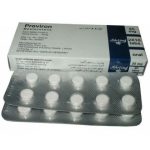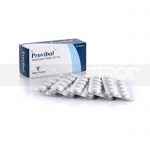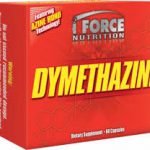Description
Oxydrol is the only oral anabolic-androgenic steroid indicated in the treatment of anemias caused by deficient red cell production. Oxymetholone is contraindicated in: male patients with carcinoma of the prostate or breast; females with hypercalcemia with carcinoma of the breast, women who are or may become pregnant; ipatients with nephrosis or the nephrotic phase of nephritis; patients with hypersensitivity to the drug or with severe hepatic dysfunction.
Anadrol (Oxydrol) is the U.S. brand name for oxymetholone, a very potent oral androgen. This compound was first made available in 1960, by the international drug firm Syntex. Since oxymetholone is quite reliable in its ability to increase red blood cell production (and effect characteristic of most anabolic/androgenic steroids), it showed great promise in treating cases of severe anemia. It turned out to be well suited for this purpose, and was popular for quite some time. But recent years have brought fourth a number of new treatments, most notably the non-steroidal hormone Epogen (erythropoietin). This drug is shown to have a much more direct effect on the red blood cell count, without the side effects of a strong androgen. Syntex stopped in the U.S. in 1993, which was around the same time they decided to drop this item in a number of foreign countries as well. Plenastril from Switzerland and Austria was dropped; following soon was Oxitosona from Spain. Many Athletes feared Anadrol 50 might be on the way out for good. But new HIV/AIDS studies have shown a new light on oxymetholone. These studies are finding (big surprise) exceptional anti-wasting properties to the compound and believe it can be used safely in many such cases. Interest has been peaked, and as of 1998 Anadrol 50 is again being sold in the United States. This time we see the same Anadrol 50 brand name, but the manufacturer is the drug firm Unimed. Syntex continues to market & license this drug in a number of countries however (under a few different brand names).





